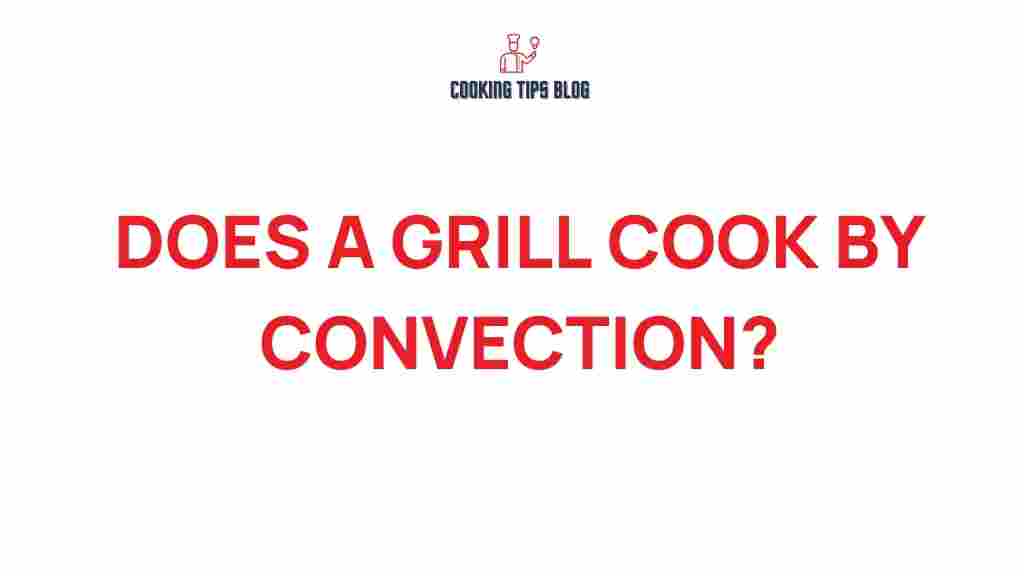Does a Grill Cook by Convection? Understanding Grill Cooking
Grilling is an age-old cooking method that brings out the best flavors in food, giving it a unique taste that is hard to replicate. But have you ever wondered if a grill cooks by convection? Understanding the science behind grill cooking can enhance your culinary skills and help you achieve perfect results every time you fire up the grill. In this article, we will delve into the mechanics of grill cooking, the role of convection, and tips for mastering this delicious cooking technique.
The Basics of Grill Cooking
At its core, grill cooking involves applying direct heat to food, which creates a sear on the surface and locks in moisture and flavor. Grills can be powered by various fuels, including charcoal, gas, or wood, each contributing a distinct flavor profile to the food being cooked. While grilling is often associated with high temperatures and quick cooking times, there are several factors at play that dictate how efficiently and effectively food cooks on a grill.
Understanding Convection
Convection is a method of heat transfer that occurs when a fluid (liquid or gas) moves, transferring heat to other objects. In the context of cooking, convection can occur in two primary forms:
- Natural Convection: This happens when hot air rises and cooler air moves in to take its place, creating a circulation of air.
- Forced Convection: This involves an external source, like a fan, that actively moves air to create a more uniform cooking temperature.
Does a Grill Cook by Convection?
Now, the core question arises: does a grill cook by convection? The answer is yes, but it depends on the type of grill you are using. Let’s explore how different grills utilize convection.
Charcoal Grills
Charcoal grills primarily rely on radiant heat. However, when the grill is closed, hot air circulates within the cooking chamber, creating a convection-like effect. This circulation helps to cook the food evenly, allowing for a more consistent temperature throughout the grilling process.
Gas Grills
Gas grills often come equipped with heat diffusers and reflectors that promote better air circulation. When you ignite the burners, the flames heat the air within the grill, causing it to rise and circulate around the food, effectively utilizing convection to cook the meat evenly.
Pellet Grills
Pellet grills are designed to function with a fan that forces hot air around the cooking chamber, maximizing the convection effect. This results in precise temperature control and even cooking, making pellet grills some of the most efficient options for grill cooking.
The Science Behind Grill Cooking
To fully appreciate how grill cooking works, it’s essential to understand the following principles:
- Heat Transfer: Heat is transferred through conduction, convection, and radiation. In grilling, both conduction (direct contact with the grill) and convection (circulating hot air) play crucial roles.
- Temperature Control: Different types of foods require different cooking temperatures. High heat is ideal for searing, while lower temperatures work best for slow cooking.
- Moisture Retention: Proper grill cooking techniques help to seal in moisture, enhancing flavor and tenderness.
Step-by-Step Process for Effective Grill Cooking
Mastering grill cooking requires practice and attention to detail. Here’s a step-by-step guide to help you get started:
1. Preheat Your Grill
Before cooking, always preheat your grill to the desired temperature. This helps create a perfect cooking environment and ensures that food cooks evenly.
2. Prepare Your Ingredients
Marinate or season your food in advance. This adds flavor and can also help retain moisture during the cooking process.
3. Set Up for Indirect Cooking
If your grill allows for it, set up for indirect cooking by placing food on one side of the grill while the heat source is on the other. This promotes better air circulation and avoids burning.
4. Monitor Temperature
Use a meat thermometer to check the internal temperature of your food. This ensures it is cooked to the desired doneness without overcooking.
5. Allow Resting Time
Once your food is done, let it rest for a few minutes. This allows the juices to redistribute, resulting in a juicier final product.
Troubleshooting Common Grill Cooking Issues
Even seasoned grillers encounter challenges. Here are some common issues and their solutions:
- Uneven Cooking: If your food is cooking unevenly, check your grill’s heat distribution. Consider rotating your food during cooking to achieve even results.
- Flare-Ups: Flare-ups can lead to burnt food. To manage this, keep a spray bottle of water nearby and move food away from direct flames when flare-ups occur.
- Dry Meat: If your grilled meat is coming out dry, consider marinating it beforehand or using a meat thermometer to avoid overcooking.
Conclusion
In summary, understanding the science behind grill cooking can significantly enhance your grilling experience. While grills do utilize convection to some extent, the effectiveness of this cooking method varies depending on the type of grill being used. By mastering the techniques and principles outlined in this article, you can elevate your grilling game and impress your family and friends with perfectly cooked dishes.
For more tips on grilling and cooking, check out our other articles here. If you’re interested in the science of cooking, you can find additional resources here.
Now, get out there and fire up your grill with confidence!
This article is in the category Tools and created by Cookingtipsblog Team
